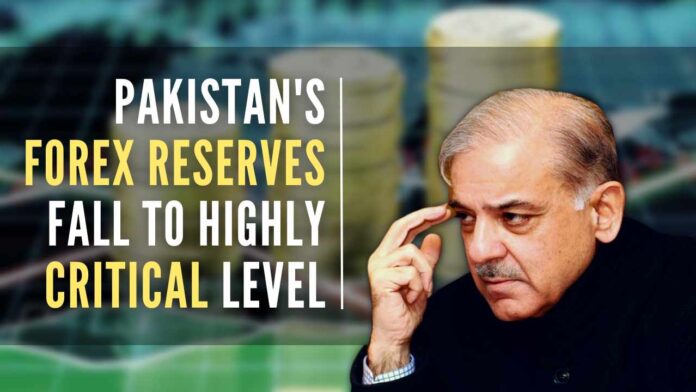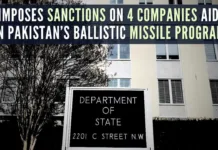
Pakistan’s economy nears breaking point as foreign exchange reserves hit rock bottom
The foreign exchange reserves held by the State Bank of Pakistan (SBP) have plunged to precarious levels as the cash-strapped nation desperately seeks to revive the stalled bailout program of the International Monetary Fund (IMF), local media reported.
Due to foreign debt payments, the central bank said its reserves fell $592 million to $3,086.2 million during the week ended January 27, the lowest since February 2014, and are barely enough to provide import cover for 18.5 days, Geo News reported.
The reserves held by the commercial banks stand at $5,655.5 million, $2.6 billion higher than those of SBP, taking the total reserves of the country to $8,741.7 million, the central bank’s statement mentioned.
Amid the liquidity crunch and the government’s removal of the cap on the dollar, which was a pre-condition of the IMF, the Pakistani rupee plunged to a historic low of Rs.271.35 against the US dollar in the interbank market, Geo News reported.
With the reserves hitting new lows every week and the government trying to keep itself afloat by meeting IMF demands, the prices of commodities have also witnessed a spike.
Consumer prices rose 27.6 percent compared to 13 percent in the same month of last year, according to data released by the Pakistan Bureau of Statistics (PBS) on Wednesday. This is the highest year-on-year inflation after May 1975 when the median rate clocked in at 27.77 percent, Geo News reported.
Due to the ongoing situation, the central bank has also restricted the issuance of letters of credit (LCs), leading to the complete or partial shutdown of businesses from textile to automobile. This is causing a disruption in the supply chain, which will ultimately lead to an increase in the rates of commodities.
SBP Governor Jamil Ahmed had said last month that the country owed $33 billion in loans and other foreign payments before the end of the fiscal year in June.
Faced with a shortage of US dollars, Pakistan only has enough foreign currency in its reserves to pay for three weeks of imports, according to a media report.
Thousands of shipping containers are piling up at ports, and the cost of essentials like food and energy is skyrocketing. Long lines are forming at gas stations as prices swing wildly in the country of 220 million, CNN reported.
A nationwide power outage last month made people even more alarmed. It brought Pakistan to a standstill, plunging residents into darkness, shutting down transit networks, and forcing hospitals to rely on backup generators. Officials have not identified the cause of the blackout.
Pressure is growing on Prime Minister Shehbaz Sharif‘s government to unlock billions of dollars in emergency financing from the International Monetary Fund, which sent a delegation to the country this week for talks.
[With Inputs from IANS]
PGurus is now on Telegram. Click here to join our channel and stay updated with all the latest news and views
For all the latest updates, download PGurus App.
- Karnataka HM apologizes to Neha’s parents while the killer Fayaz’s mother expresses her desire to ‘punish her son’ - April 20, 2024
- US: Indian student’s death possibly linked to Blue Whale suicide game - April 20, 2024
- BSF seizes China-made drone near India-Pakistan border in Amritsar - April 20, 2024











But they had money to import >200 luxury cars?